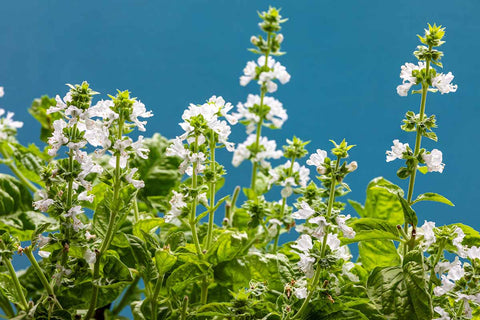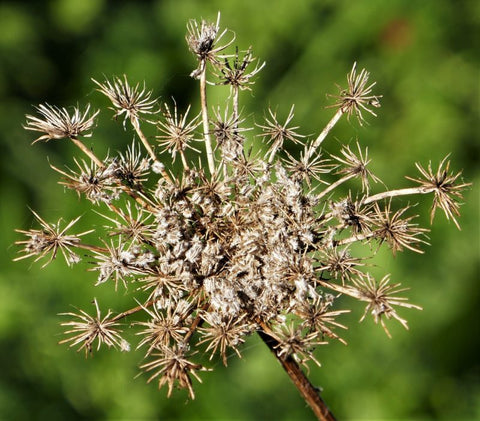As gardeners, we understand the importance of protecting our plants from the unpredictable whims of nature. From frost to pests, our botanical companions face a myriad of threats. That's where garden covers come in – versatile shields that safeguard our green treasures and ensure their well-being. Let's explore the diverse array of garden covers available and how they can be utilized to defend our plants.

- Understanding Garden Covers
- Floating Row Covers
- Frost Blankets
- Cold Frame
- Shade Cloth
- Bird Netting
- Insect Mesh
- Plastic Mulch
- Weed Barrier Fabric
- Hail Protection Covers
- DIY Garden Covers
- Conclusion
Understanding Garden Covers
Definition and Purpose
Garden covers encompass a range of materials and structures designed to shield plants from adverse conditions and external threats. Whether it's protecting against frost, insects, or excessive sunlight, these covers serve as guardians of our garden's health and vitality.
Types of Garden Covers
Garden covers come in various forms, each tailored to address specific challenges faced by gardeners. From floating row covers to plastic mulch, understanding the different types of covers available allows us to choose the best defense for our plants.
Floating Row Covers
What are Floating Row Covers?
Floating row covers, also known as plant blankets or frost covers, are lightweight fabrics draped over plants to protect them from frost, insects, and harsh weather conditions.
Benefits of Floating Row Covers
Floating row covers offer several benefits, including insulation against cold temperatures, protection from pests without the use of chemicals, and the ability to allow air, light, and moisture to penetrate while shielding plants from harsh elements.
How to Use Floating Row Covers
To use floating row covers effectively, simply drape the fabric over plants and secure the edges to the ground using stakes or rocks. Ensure proper anchoring to prevent the covers from being blown away by strong winds.
Frost Blankets
Introduction to Frost Blankets
Frost blankets are specifically designed to protect plants from frost damage by creating a barrier that insulates them from cold temperatures.
Advantages of Frost Blankets
Frost blankets provide instant protection against frost, extend the growing season, and safeguard tender plants during cold snaps. They are breathable, allowing air and moisture circulation while trapping heat close to the plants.
Tips for Using Frost Blankets Effectively
When using frost blankets, ensure they are securely anchored to the ground to prevent them from being dislodged by wind gusts. Monitor weather forecasts closely and cover plants before temperatures drop below freezing to maximize protection.

Cold Frame
Introduction to Cold Frame
A cold frame is a simple and effective way to extend the growing season and protect plants from frost and harsh weather conditions.
Advantages of Cold Frame
Cold frames create a microclimate that is warmer than the surrounding environment, allowing plants to thrive even in cooler temperatures. They provide protection from frost, wind, and heavy rainfall, allowing for earlier planting and later harvests.
Tips for Using Cold Frame Effectively
When using a cold frame, position it in a sunny location and ensure proper ventilation to prevent overheating. Monitor temperature fluctuations and adjust ventilation as needed to maintain optimal growing conditions for your plants.
Shade Cloth
Exploring Shade Cloth
Shade cloth is a woven fabric that provides shade and protection from intense sunlight, making it ideal for use in hot climates or during periods of extreme heat.
Benefits of Shade Cloth
Shade cloth prevents sunburn and heat stress in plants by reducing sunlight intensity and lowering temperatures. It allows air circulation, preventing heat buildup and humidity under the cover.
Using Shade Cloth in Your Garden
To use shade cloth effectively, drape it over plants or suspend it above them using stakes or a frame. Choose the appropriate shade density based on the needs of your plants and the intensity of sunlight in your area.
Bird Netting
Overview of Bird Netting
Bird netting is a lightweight mesh material used to protect plants from birds and other wildlife that may feed on them, preventing damage to fruits, vegetables, and other vulnerable crops.
Advantages of Bird Netting
Bird netting provides an effective barrier against birds, preventing them from accessing fruits, vegetables, and other vulnerable plants. It is durable, reusable, and easy to install.
Tips for Installing and Maintaining Bird Netting
When installing bird netting, ensure it is securely anchored to the ground or tied to a frame to prevent birds from getting trapped underneath. Regularly inspect the netting for tears or damage, and repair or replace it as needed to maintain its effectiveness.
Insect Mesh
Introduction to Insect Mesh
Insect mesh, also known as bug netting or insect netting, is a fine mesh fabric that shields plants from insect pests while allowing air and sunlight to penetrate.
Advantages of Insect Mesh
Insect mesh provides an effective barrier against insects such as aphids, caterpillars, and beetles, reducing the need for chemical pesticides. It allows sunlight and ventilation for healthy growth.
Best Practices for Using Insect Mesh
When using insect mesh, ensure it is securely anchored to the ground or tied to a frame to prevent insects from accessing plants. Regularly inspect the mesh for tears or damage, and repair or replace it as needed to maintain its effectiveness.

Plastic Mulch
Understanding Plastic Mulch
Plastic mulch is a thin layer of plastic film laid on the soil surface to suppress weeds, retain moisture, and regulate soil temperature.
Benefits of Plastic Mulch
Plastic mulch conserves water, prevents weed growth, eliminates the need for herbicides, and warms the soil for faster germination and growth
How to Apply Plastic Mulch in Your Garden
To apply plastic mulch, first prepare the soil by removing weeds and leveling the surface. Lay the plastic mulch over the soil, ensuring it is smooth and flat with no wrinkles or air pockets. Secure the edges of the mulch with soil or weights to prevent it from being blown away by wind.
Weed Barrier Fabric
Overview of Weed Barrier Fabric
Weed barrier fabric suppresses weed growth, retains soil moisture, regulates soil temperature, and prevents soil erosion.
Advantages of Weed Barrier Fabric
Weed barrier fabric provides an effective and environmentally friendly solution for weed control, reducing the need for chemical herbicides.
Tips for Installing and Using Weed Barrier Fabric
When installing weed barrier fabric, ensure it is securely anchored to the ground and overlaps sufficiently to prevent weeds from growing through gaps. Cut holes in the fabric to accommodate existing plants, and cover the edges with mulch or soil to prevent them from being exposed to sunlight.

Hail Protection Covers
What are Hail Protection Covers?
Hail protection covers are sturdy structures or materials designed to shield plants from damage caused by hailstorms, preventing injury to leaves, fruits, and stems.
Advantages of Hail Protection Covers
Hail protection covers deflecting hailstones away from plants, reducing crop losses, and preventing damage to leaves, fruits, and stems.
Considerations When Using Hail Protection Covers
When using hail protection covers, ensure they are securely anchored to the ground or to a frame to prevent them from being dislodged by strong winds. Monitor weather forecasts closely and deploy the covers before hailstorms occur to maximize protection.
DIY Garden Covers
Benefits of DIY Garden Covers
DIY garden covers offer an affordable and customizable solution for protecting plants, allowing you to tailor the covers to suit the specific needs of your garden.
Creative Ideas for Making Your Own Garden Covers
From repurposed materials to homemade structures, there are countless creative ways to make your own garden covers. Explore DIY tutorials and experiment with different materials and designs to find the best option for your garden.
Conclusion
In the ever-changing world of gardening, adaptation and protection are key to ensuring the success of our green endeavors. By employing a variety of garden covers, we can shield our plants from the unpredictable forces of nature and nurture them to their fullest potential. Whether it's floating row covers to ward off frost or shade cloth to provide respite from the sun, each cover plays a vital role in the defense and preservation of our botanical companions. So, let's embrace the diversity of garden covers and embark on a journey to protect and preserve our green sanctuaries.









